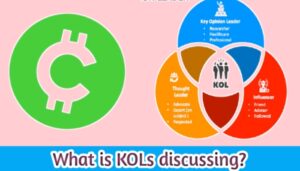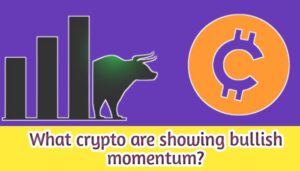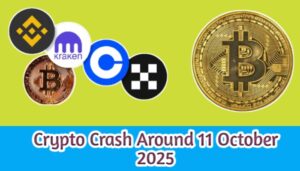Digital currencies have revolutionized the world of finance, offering fast, borderless, Best Digital Currency to Buy and decentralized methods of transferring and storing value. Unlike traditional fiat currencies like USD or EUR, digital currencies rely on technology, blockchain networks, and cryptographic protocols to operate securely.
1. What is a Digital Currency?
A digital currency is a form of money that exists only electronically. It can be used for online payments, investment, or peer-to-peer transfers without physical coins or banknotes.
Characteristics:
- Decentralized control in many cases
- Transparent and secure ledger systems
- High accessibility worldwide
2. Difference Between Cryptocurrency and Digital Currency
| Feature | Digital Currency | Cryptocurrency |
|---|---|---|
| Control | Can be centralized or decentralized | Mostly decentralized |
| Technology | May not use blockchain | Always uses blockchain |
| Examples | Digital USD, e-RMB | Bitcoin, Ethereum |
| Volatility | Usually stable | Highly volatile |
3. Why Invest in Digital Currencies?
- High Growth Potential: Many digital currencies have shown exponential returns.
- Diversification: Adds an alternative asset class to your portfolio.
- Liquidity: Most major cryptocurrencies are highly liquid.
- Global Access: Can be bought and sold worldwide with internet access.
4. Factors to Consider Before Buying a Digital Currency
- Market Capitalization: Indicates the size and popularity of the currency.
- Technology and Use Case: Blockchain network, smart contracts, DeFi applications.
- Liquidity: Ability to buy/sell quickly without affecting price.
- Volatility and Risk: Higher risk can lead to higher rewards, but also losses.
- Regulatory Environment: Legal status in your country.
5. Market Capitalization and Its Importance
Market capitalization is calculated as:
Market Cap = Current Price × Circulating Supply
It helps investors gauge the relative size, stability, and growth potential of a digital currency.
| Category | Market Cap Range | Investment Consideration |
|---|---|---|
| Large-cap | > $10 billion | Lower risk, established coins |
| Mid-cap | $1–10 billion | Growth potential with moderate risk |
| Small-cap | < $1 billion | High-risk, potentially high reward |
7. Popular Digital Currencies for Investment
Bitcoin (BTC)
Overview: Bitcoin is the first and most widely recognized cryptocurrency, launched in 2009 by an anonymous developer known as Satoshi Nakamoto.
Key Features:
- Decentralized and peer-to-peer
- Limited supply of 21 million coins
- Acts as “digital gold” and a store of value
Investment Potential: BTC is considered a safer investment within crypto due to its large market cap and widespread adoption.
Ethereum (ETH)
Overview: Launched in 2015 by Vitalik Buterin, Ethereum introduced smart contracts, allowing decentralized applications (DApps) to run on its blockchain.
Key Features:
- Smart contracts enable DeFi, NFTs, and dApps
- High adoption across blockchain projects
- Transitioning to Ethereum 2.0 with proof-of-stake (PoS) for energy efficiency
Investment Potential: ETH provides both store-of-value and utility due to its smart contract capabilities.
Binance Coin (BNB)
Overview: Binance Coin was launched by the Binance Exchange in 2017 to pay for trading fees and participate in the Binance ecosystem.
Key Features:
- Discount on Binance trading fees
- Used in Binance Smart Chain (BSC) for dApps and token creation
- Periodic token burn to reduce supply
Investment Potential: BNB benefits from Binance’s growth and the DeFi ecosystem on BSC.
Cardano (ADA)
Overview: Launched in 2017 by Charles Hoskinson, Cardano focuses on proof-of-stake and scalable blockchain infrastructure.
Key Features:
- Energy-efficient and eco-friendly PoS consensus
- Strong academic research backing
- Smart contracts and decentralized applications support
Investment Potential: ADA is favored for sustainability and long-term blockchain development projects.
Solana (SOL)
Overview: Solana, launched in 2020, is known for high-speed, low-cost transactions. It is popular for DeFi and NFT platforms.
Key Features:
- Fast block times (400 ms) and high throughput (50,000 TPS)
- Low transaction fees
- Ecosystem supports DeFi, NFTs, and web3 applications
Investment Potential: SOL is attractive for investors seeking fast and scalable blockchain solutions.
Ripple (XRP)
Overview: XRP is designed for cross-border payments and banking solutions, developed by Ripple Labs in 2012.
Key Features:
- Focused on remittances and international transactions
- Fast settlement (3–5 seconds per transaction)
- Partnerships with banks and financial institutions
Investment Potential: XRP is practical for global payments, though regulatory issues in the US have caused volatility.
7. Emerging and Promising Digital Currencies
Besides popular cryptocurrencies, some emerging coins show potential:
- Polkadot (DOT): Interoperability between blockchains
- Avalanche (AVAX): High-speed smart contracts
- Polygon (MATIC): Ethereum layer-2 scaling solution
- Chainlink (LINK): Decentralized oracle network connecting real-world data
8. How to Choose the Right Digital Currency to Buy
- Evaluate use case and technology
- Check market adoption and partnerships
- Understand volatility and risk tolerance
- Consider long-term vs short-term investment goals
9. Digital Currency Exchanges and Platforms
Popular exchanges include:
- Coinbase – Beginner-friendly, regulated
- Binance – Large variety of coins, advanced features
- Kraken – Secure, regulated in multiple jurisdictions
- Gemini – Focus on compliance and security
10. Wallets for Safe Storage of Digital Currency
- Hardware Wallets: Ledger, Trezor (offline storage, most secure)
- Software Wallets: MetaMask, Trust Wallet (online, convenient)
- Exchange Wallets: Provided by exchanges (less secure, convenient)
11. Risks of Investing in Digital Currencies
- High volatility and price swings
- Regulatory changes and bans
- Cybersecurity threats and hacking
- Scams and fraudulent coins
12. Long-Term vs Short-Term Investment Strategies
- HODL (Long-Term): Buy and hold for years to benefit from growth
- Trading (Short-Term): Use charts, trends, and market news to trade actively
13. Fundamental Analysis of Digital Currencies
- Evaluate project team and developers
- Analyze whitepaper and roadmap
- Consider market demand and utility
14. Technical Analysis for Trading Digital Currencies
- Use price charts, candlestick patterns, and indicators
- Analyze support/resistance levels and trends
- Tools: RSI, MACD, Moving Averages
15. Diversifying Your Digital Currency Portfolio
- Invest in large-cap, mid-cap, and emerging coins
- Spread investment across different blockchain use cases
- Avoid putting all funds into a single cryptocurrency
16. Regulatory Considerations and Legal Issues
- Regulations differ by country
- KYC/AML compliance is mandatory on most exchanges
- Tax implications for gains and transactions
17. Tips for Safe and Smart Digital Currency Investment
- Use secure wallets and exchanges
- Keep private keys confidential
- Avoid impulsive buying during hype
- Diversify and manage risk
18. Future Trends in Digital Currency
- Growth of DeFi and NFT ecosystems
- Adoption of central bank digital currencies (CBDCs)
- Integration of blockchain in real-world applications
- Increased institutional investment
19. Conclusion
The “best” digital currency depends on your investment goals, risk tolerance, and portfolio strategy. Bitcoin and Ethereum remain strong foundations due to adoption and market capitalization, while BNB, ADA, SOL, and XRP offer unique utility and growth potential. Emerging coins provide high-risk, high-reward opportunities.

















